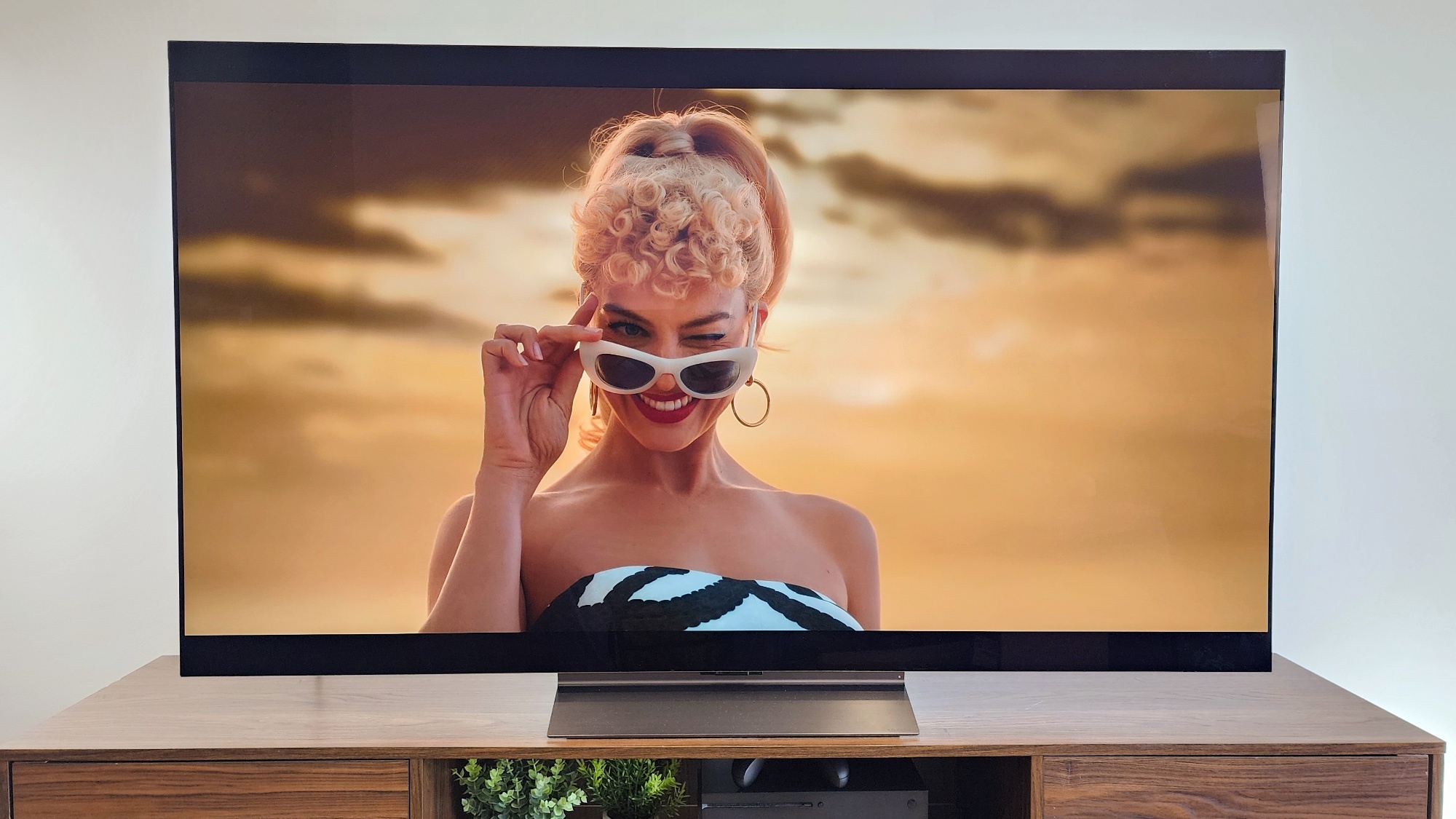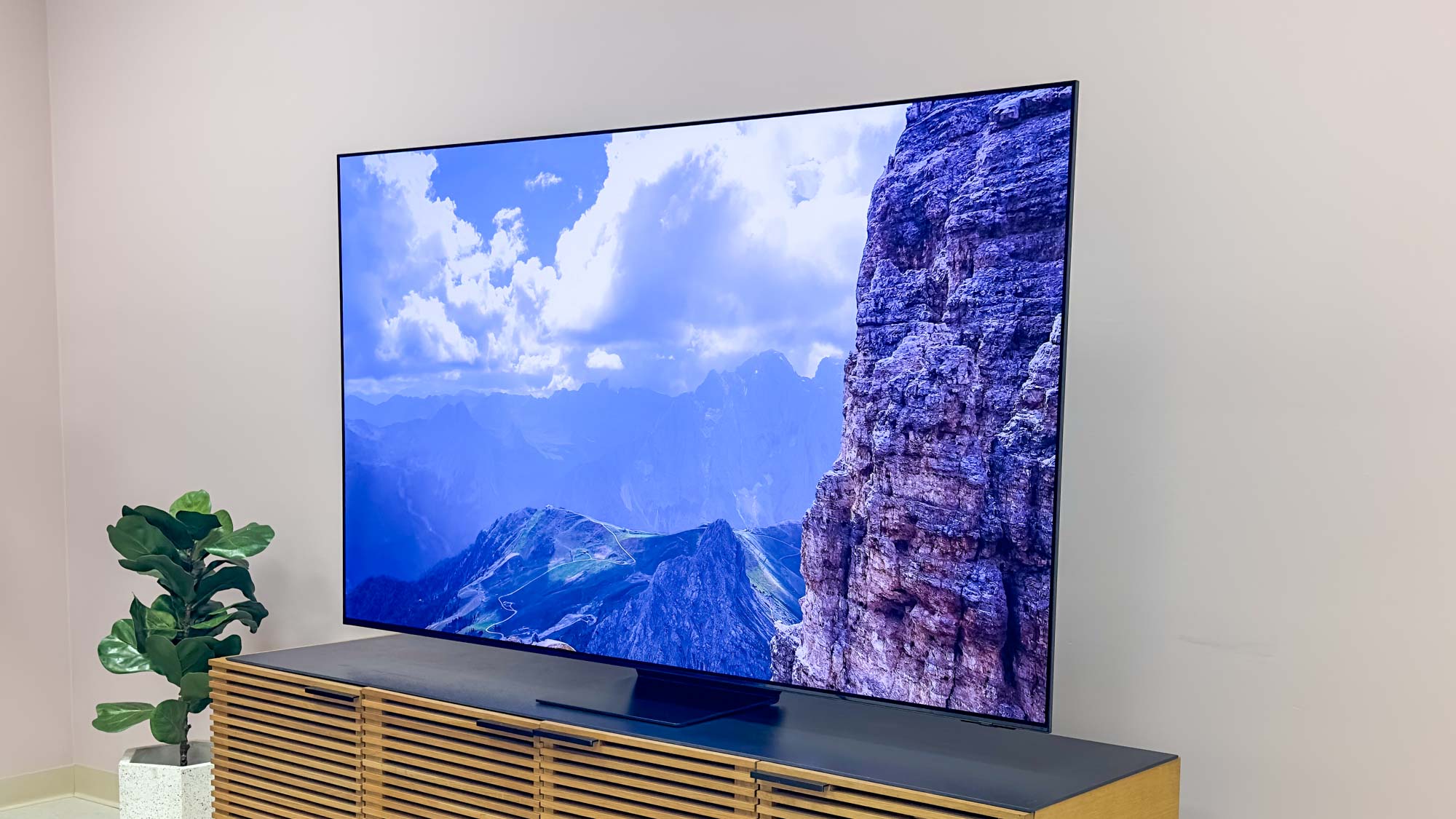
Compared to the TVs we had a decade ago, TVs are miles ahead of where they were — thanks to advancements in tech related to quantum dots, OLED displays, and smaller and smaller LED backlights.
Unfortunately, for all the progress we've made on the picture quality side of things, TVs are still notoriously energy-consuming. Getting a more energy-efficient TV could genuinely have an impact on your energy bill at the end of the month — but is that even a realistic option?
Turns out, the answer is a little complicated.
LG and Samsung have famously been developing their own TV technologies for around 10 years now. On the LG side, that development came through OLED technology — while Samsung has been working on refining quantum dot tech that it uses in its so-called QLED TVs.
Is one of these technologies more energy-efficient than the other? Which one should you go for if you want to cut your energy bill down a little? We've run the numbers, and have have some definitive proof that, for now, replacing a QLED TV with an OLED TV would reduce your overall electricity bill...as long as you don't mind paying more upfront for a more-expensive OLED TV.
OLED vs QLED: Energy efficiency
So, exactly how energy-efficient are modern OLED TVs? Well, it can vary a little but the brand-new 65-inch LG G4 OLED consumes 175 watts on average, while the more budget-focused 65-inch LG C4 OLED sits in at 145.3W.
Using the LG G4 for four hours per day, you’d pay approximately $44.20 per year, while the C4 would cost you $36.62.
So what does that mean as it relates to cost? Well, according to the U.S. Bureau of Labor Statistics, the average cost of energy in the U.S. in April 2024 was $0.173 per kilowatt-hour. That means that in using the LG G4 for four hours per day, you’d pay $44.20 approximately per year, while the C4 would cost you $36.62. Keep in mind that these figures will vary widely, and don’t take into account the fact that the TV still consumes some energy in standby mode, which it would be set to the other 22 hours of the day.
So what about QLED TV energy-efficiency? Samsung’s top-tier TVs these days are actually OLED TVs, however the 65-inch Samsung QN90D Neo QLED’s typical power consumption is 132W, while the typical consumption of last year's Samsung Q80C sits in at 202W. So, the Neo QN90D would cost $32.84 per year for four hours of use per day, while the Q80C would cost $50.52.
When you compare more models, QLED TVs do tend to consume a little more energy than OLED TVs. However, that seems to largely relate to traditional QLED TVs, rather than the newer, more expensive Neo QLED TVs.
Are QD-OLED TVs any better?

Remember that OLED TVs can turn on and off individual pixels, so when there’s black in an image, those pixels are simply turned off.
QLED TVs may not currently have the pixel-by-pixel control that OLED TVs offer, but that doesn’t necessarily mean that they’re constantly lighting the entire image. In fact, modern QLED TVs have dimming zones, allowing them to dim or turn off sections of the TV where the image is darker. Again, it’s not pixel-by-pixel control, but they can achieve deeper black-levels and a more energy-efficient approach.
QD-OLED TVs take the best of both worlds — with an OLED backlight that shines through a layer of quantum dots for increased brightness and more vibrant colors. So, how energy efficient are QD-OLED TVs? Well, it’s a little hard to tell given the fact that there are so few QD-OLED TVs out there right now. However, Samsung’s best TVs right now use QD-OLED technology.
The Samsung S95D, according to Samsung, typically consumes 153W. That’s pretty good — and on the low-end compared to other TVs out there. Using the TV for four hours per day would cost you $39.14 per year.
Should you swap your TV for a more energy-efficient one?
Based on the data I've collected, the most energy-efficient TVs are OLED TVs and Neo QLED TVs, with traditional QLED TVs consuming a little more energy.
Based on the data I've collected, the most energy-efficient TVs are OLED TVs and Neo QLED TVs, with traditional QLED TVs consuming a little more energy. QD-OLED TVs are promising when it comes to power consumption — at least if the majority of them are anything like Samsung’s top-tier Samsung S95D.
So, should you buy a specific kind of TV to save on energy costs? You certainly shouldn’t if you’d be buying a more expensive TV just to save on energy. If you spend $100 more on a TV that was only a little more energy efficient, you likely wouldn’t recoup those costs over a decade of using the TV.
That being said, if you already had your mind set on buying an OLED TV or a new Neo QLED model because of their superior picture quality, then you get the added benefit of saving a few extra dollars throughout the year on your utility bills.
Saving money and having a new TV? Sounds like a win-win to us.







